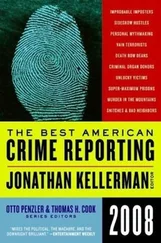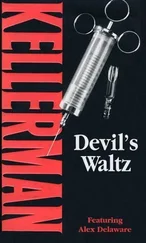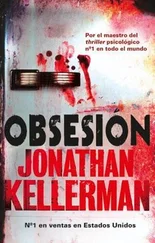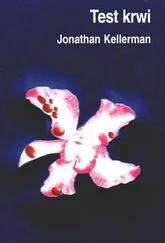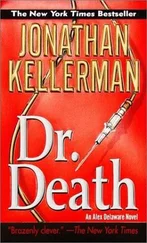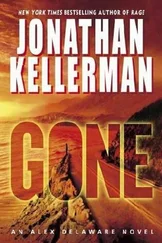Jonathan Kellerman - Blood Test
Здесь есть возможность читать онлайн «Jonathan Kellerman - Blood Test» весь текст электронной книги совершенно бесплатно (целиком полную версию без сокращений). В некоторых случаях можно слушать аудио, скачать через торрент в формате fb2 и присутствует краткое содержание. Город: New York, Год выпуска: 1986, ISBN: 1986, Издательство: Atheneum, Жанр: Триллер, на английском языке. Описание произведения, (предисловие) а так же отзывы посетителей доступны на портале библиотеки ЛибКат.
- Название:Blood Test
- Автор:
- Издательство:Atheneum
- Жанр:
- Год:1986
- Город:New York
- ISBN:978-0689116346
- Рейтинг книги:4 / 5. Голосов: 1
-
Избранное:Добавить в избранное
- Отзывы:
-
Ваша оценка:
- 80
- 1
- 2
- 3
- 4
- 5
Blood Test: краткое содержание, описание и аннотация
Предлагаем к чтению аннотацию, описание, краткое содержание или предисловие (зависит от того, что написал сам автор книги «Blood Test»). Если вы не нашли необходимую информацию о книге — напишите в комментариях, мы постараемся отыскать её.
Blood Test — читать онлайн бесплатно полную книгу (весь текст) целиком
Ниже представлен текст книги, разбитый по страницам. Система сохранения места последней прочитанной страницы, позволяет с удобством читать онлайн бесплатно книгу «Blood Test», без необходимости каждый раз заново искать на чём Вы остановились. Поставьте закладку, и сможете в любой момент перейти на страницу, на которой закончили чтение.
Интервал:
Закладка:
There was a small hinged trapdoor cut into the ceiling of the closet. I found a stepstool hidden behind a mildewed winter coat, pulled it out, and stretched high enough to give the door a strong push. It opened with a slow pneumatic hiss, and a ship’s ladder slid down automatically through the aperture. I tested it, found it steady, and ascended.
The attic covered the full area of the house, easily two thousand square feet. It had been transformed into a library, though not an elegant one.
Plywood bookcases were propped against all four walls. A desk had been constructed of the same cheap wood. A metal folding chair sat before it. The floor was speckled with sawdust. I looked for another entry to the room and found none. The windows were small and slatted. Only one mode of construction was possible: planks had been slipped through the trapdoor and nailed together up here.
I ran the flashlight over the volumes that lined the shelves. With the exception of thirty years’ worth of Reader’s Digest condensed books, and a case full of National Geographies , all were on biology, horticulture, and related topics. There were hundreds of pamphlets from the U.C. Riverside Agricultural Station and the Federal Government Printing Office. Stacks of mail-order seed catalogues. A set of oversized leather-bound Encyclopaedia of Fruit printed in England, dated 1879, and illustrated with hand-tipped color lithographs. Scores of college texts on plant pathology, soil biology, forestry management, genetic engineering. A hiker’s guide to the trees of California. Complete collections of Horticulture and Audubon. Copies of patents awarded to inventors of farm equipment.
Four shelves of the case closest to the desk were crowded with blue-cloth looseleaf binders labeled with Roman numerals. I pulled out Volume I.
The cover was dated 1965. Inside were eighty-three pages of handwritten text. The writer’s penmanship was hard to decipher — cramped, backslanted, and of uneven darkness. I held the flashlight with one hand, turned pages with the other, and finally got a perceptual fix on it.
Chapter One was a summary of Garland Swope’s plan to be the Cherimoya King. He actually used that term, even doodling miniature crowns in the margins of the book. There was an outline of the fruit’s attributes and a reminder to check out its nutritional value. The section ended with a list of adjectives to be used when describing it to prospective buyers. Succulent. Juicy. Mouthwatering. Refreshing. Heavenly. Other-worldly.
The rest of the first volume and the nine that followed continued in this vein. Swope had authored eight hundred and twenty-seven pages of text lauding the cherimoya over a ten-year-period, recording the progress of each tree in his young grove and plotting his control of the market. (“Riches? Fame? Which is paramount? No matter, there will be both.”)
Stapled in one of the books was an invoice from a printer and a sample brochure brimming with gushing prose and illustrated with color photographs. One picture showed Swope holding a bushel of the exotic fruit. As a young man he’d resembled Clark Gable, tall, husky, with dark wavy hair and a pencil mustache. The caption identified him as a world-renowed horticulturist and botanical researcher specializing in the propagation of rare food crops and dedicated to ending world hunger.
I read on. There were detailed descriptions of crossbreeding experiments between the cherimoya and other members of annon-aceae. Swope was a compulsive reporter, painstakingly listing every possible climactic and biochemical variable. In the end that line of research had been abandoned with the notation that “No hybrid approaches the perfection that is a. cherimoya.”
The optimism came to an abrupt halt in Volume X: I opened to newspaper clippings reporting the freak frost that had decimated the cherimoya grove. There were descriptions of the agricultural damage wrought by the cold winds and projections of rises in food prices clipped from San Diego papers. A mournful feature on the Swopes specifically had been printed in the La Vista Clarion. The next twenty pages were filled with jagged, obscene scribbles, the paper deeply indented often to the point of tearing; the pen had been used to stab and slash.
Then new experimental data.
As I turned the pages, Garland Swope’s fascination with the grotesque, the stillborn, and the deadly evolved before my eyes. It started as theoretical notations about mutations, and rambling hypotheses about their ecological value. Midway through the eleventh volume was the chilling answer Swope found to those questions: “The sublimely repugnant mutations of otherwise mundane species must be evidence of the Creator’s essential hatefulness.”
The notes grew progressively less coherent even as they increased in complexity. At times Swope’s handwriting was so cramped as to be illegible, but I was able to make out most of it — tests of poison content on mice, pigeons, and sparrows; careful selection of deformed fruit for genetic culture; culling of the normal, nurturance of the defective. All part of a patient, methodical search for the ultimate horticultural horror.
Then there was yet another turn in the convoluted journey through Swope’s mind: in the first chapter of Volume XII it appeared he’d dropped his morbid obsessions and gone back to working with annonaceae , concentrating on a species Maimon hadn’t mentioned: a. zingiber. He’d conducted a series of pollinization experiments, carefully listing the date and time of each. Soon, however, the new studies were interrupted by accounts of work with deadly toadstools, foxglove, and dieffenbachia. There was a gleeful emphasis upon the neurotoxic qualities of the last exemplified by a footnote attributing the plant’s common name, dumb cane, to its ability to paralyze the vocal chords.
This pattern of shifting between his pet mutations and the new annona became established by the middle of the thirteenth volume and continued through the fifteenth.
In Volume XVI, the notes took on an optimistic tone as Swope exulted in the creation of “a new cultivar.” Then, as suddenly as it had appeared, a. zingiber was discarded and dismissed as “showing robust breeder potential but lacking any further utility.” I put my strained eyes through another hundred pages of madness and set the binders aside.
The library contained several books on rare fruit, many of them exquisite editions published in Asia. I looked through all of them but could find no reference to annona zingiber. Puzzled, I searched the shelves for suitable reference material and pulled out a thick dog-eared volume titled Botanical Taxonomy.
The answer was at the end of the book. It took a while to comprehend the full meaning of what I’d just read. An unspeakable conclusion but agonizingly logical.
As the insights hit I was seized with acute claustrophobia and grew rigid with tension. Sweat ran down my back. My heart pounded and my breathing quickened. The room was an evil place and I had to get out.
Frantically I gathered up several of the blue cloth binders and placed them in a cardboard box. I carried it and my tools down the ladder, bolted the bedroom, and rushed to the landing. Teetering with vertigo, I ran recklessly down the stairs and crossed the frigid living room with four long strides.
After fumbling with the latch I managed to throw open the front door. I stood on the rotting porch until I caught my breath.
Silence greeted me. I’d never felt so alone.
Without looking back I made my escape.
22
Along with everyone else, I’d dismissed Raoul’s conviction that Woody Swope had been abducted by the Touch. Now I wasn’t so sure.
Читать дальшеИнтервал:
Закладка:
Похожие книги на «Blood Test»
Представляем Вашему вниманию похожие книги на «Blood Test» списком для выбора. Мы отобрали схожую по названию и смыслу литературу в надежде предоставить читателям больше вариантов отыскать новые, интересные, ещё непрочитанные произведения.
Обсуждение, отзывы о книге «Blood Test» и просто собственные мнения читателей. Оставьте ваши комментарии, напишите, что Вы думаете о произведении, его смысле или главных героях. Укажите что конкретно понравилось, а что нет, и почему Вы так считаете.

